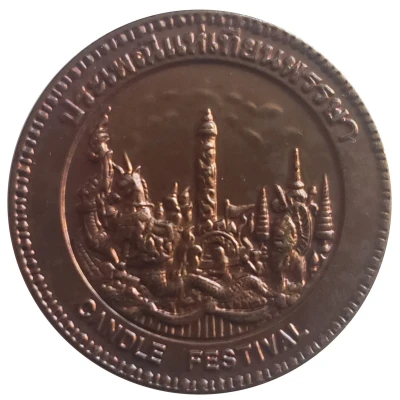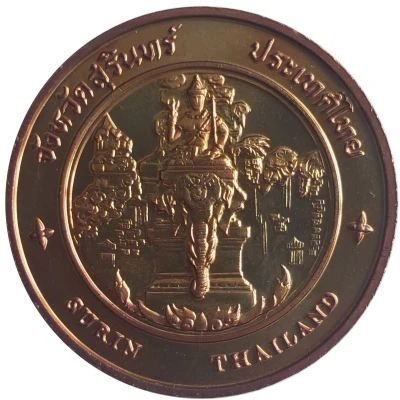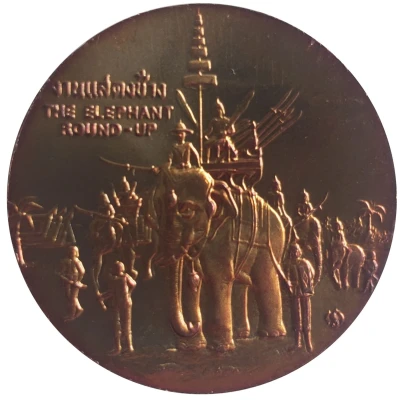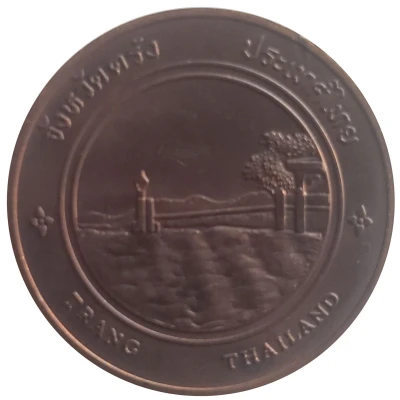
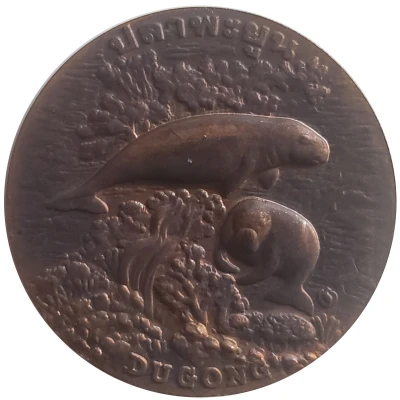

© Micheal Linke
Medal - Trang Province ND
| Copper | 8.5 g | 25 mm |
| Location | Thailand |
|---|---|
| Type | Medals › Souvenir medallions |
| Composition | Copper |
| Weight | 8.5 g |
| Diameter | 25 mm |
| Shape | Round |
| Technique | Milled |
| Orientation | Medal alignment ↑↑ |
| Updated | 2024-11-13 |
| Numista | N#336016 |
|---|---|
| Rarity index | 97% |
Reverse
A pair of Dugong
Lettering: DUGONG
Edge
Plain
Comment
Obverse:The seal of the province shows a lighthouse bridge above a sea of waves. The lighthouse bridge refers to Trang as a seaport trading with foreign countries.
https://en.m.wikipedia.org/wiki/Trang_province
Reverse:
Dugong Sculpture at Hat Chao Mai
The dugong is the only sirenian in its range, which spans the waters of some 40 countries and territories throughout the Indo-West Pacific. The dugong is largely dependent on seagrass communities for subsistence and is thus restricted to the coastal habitats which support seagrass meadows, with the largest dugong concentrations typically occurring in wide, shallow, protected areas such as bays, mangrove channels, the waters of large inshore islands and inter-reefal waters. The northern waters of Australia between Shark Bay and Moreton Bay are believed to be the dugong's contemporary stronghold.
Like all modern sirenians, the dugong has a fusiform body with no dorsal fin or hind limbs. The forelimbs or flippers are paddle-like. The dugong is easily distinguished from the manatees by its fluked, dolphin-like tail, but also possesses a unique skull and teeth. Its snout is sharply downturned, an adaptation for feeding in benthic seagrass communities. The molar teeth are simple and peg-like, unlike the more elaborate molar dentition of manatees.
https://en.m.wikipedia.org/wiki/Dugong

